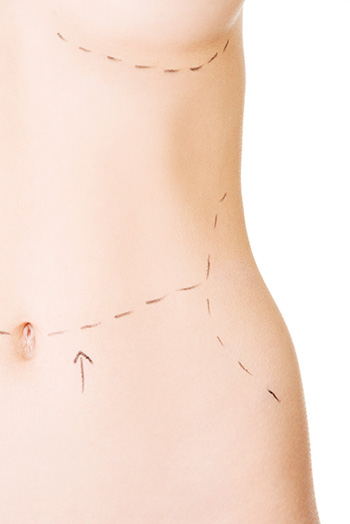Liposuction
Liposuction is the process of removing unwanted fat from the body with the help of a vacuum device and cannulas. With the help of this process, accumulated fat that cause deformities in our body is removed. Depending on the purpose of liposuction method, it is named as LIPOSHAPING, LIPOSCULPTURING, BODYSHAPING, LIPOPLASTY, and SUCTION LIPECTOMY, etc. Basically, the nature and purpose of all these methods are the same. The main difference in liposuction methods is in the techniques used.
These techniques are laser liposuction, vaser liposuction, dry, ultrasound-assisted lipoplasty, tumescent liposuction (by introducing fluid) and super-wet techniques. There are differences between these techniques in terms of patient recovery times and liposuction results. It should not be forgotten that liposuction never replaces diet or exercise. It only gives the desired shape to our body by removing accumulated fat tissue that cannot be eliminated by losing weight.
Areas of Application for Liposuction
The areas where liposuction is frequently applied include abdomen, waist, buttocks, hips, inner thighs, thighs, knees, arms, and under the chin. When necessary, the procedure can also be applied in a limited manner in other areas with unwanted fat accumulation in the body.
Good Candidates for Liposuction
The best candidate for liposuction is the candidate that has realistic expectations from this procedure. If the weight of the patient is close to the ideal weight, the skin has good elasticity and there is no disease that will affect the operation result, it could be said that the patient is an ideal candidate for liposuction.
Deciding on Liposuction
While consulting the plastic surgeon, you should communicate your expectations to him realistically for the success of the surgical procedure and also ask the surgeon to enlighten you on liposuction and alternative treatment methods in terms of what is best suitable for your expectations. If you are an ideal candidate for liposuction, your doctor will examine you in terms of the diseases you have had, the medications you have used, your blood work and your current physical health, and will tell you the preparation stages of liposuction.
Stages of Preparation for Surgery
- Detection of excess fat accumulation in the body with examination and digital imaging before liposuction,
- Determination of a corset suitable for the area where liposuction will be applied,
- Informing the patient about how to keep body hygiene before and after liposuction,
- Before and after liposuction, the patient will be informed in detail about nutrition, medication use, exercise program and return to daily life.
- The patient will be informed about the liposuction technique and the recovery process after surgery.
Surgery
Liposuction can be performed in hospitals as an out-patient or in-patient operation under general or local anesthesia. The type of anesthesia to be applied is decided by considering the amount of fat tissue, the general health status of the patient, the areas from where the fat will be removed and the patient’s approach.
Surgery is performed through small incisions of 3-4 mm, using a vacuum tool or injectors and cannulas. With the help of cannulas placed through these small incisions, fat accumulations are removed and the body is given the desired ideal shape. This small incision, which will fade later, is closed, and the patient is dressed in a suitable corset on the operating table. During and after the operation, fluid replacement, careful postoperative follow-up and medication are important.
When the patient’s systemic symptoms return to normal, the patient is sent home with instructions. These instructions are to rest at home for a few days, to comply with the prescribed medication, not to use non-prescription drugs without consulting, consuming at least 2 liters of liquid a day and soft foods for the first days.
After the Surgery
After the operation, your doctor will call you for changing dressings and follow-up controls at necessary intervals. In these few weeks, you may have mild bruising, numbness, pain and burning sensation in the areas where liposuction is performed; these symptoms are completely normal and will disappear within a few weeks.
Your recovery will occur gradually. You will be able to return to work and have limited activities within a few days after surgery. Your surgeon may recommend walks in the early period. Within 7-10 days, the small wounds caused by the needles will heal and you will return to your normal life. You will start massages that will last at least 20-25 minutes a day. In addition to massages, you will be given LPG or ultrasound therapy after 1 month. At the end of 3-4 weeks, the corset you wear will be removed and you will be able to return to your normal life.
It may take 6-8 weeks for noticeable swelling to subside; but as of the 3rd week, you will begin to see the ideal shape of your body. Your surgeon will evaluate the results for you and himself/herself using the before and after pictures and computer archive.
You should preserve your new body shape with diet, exercises and by following your doctor’s recommendations.

